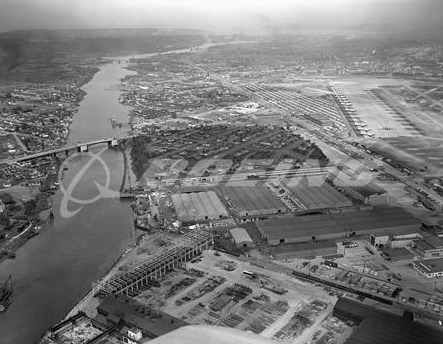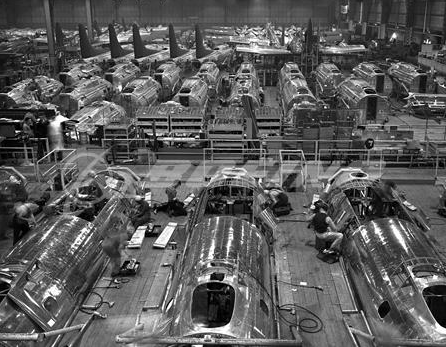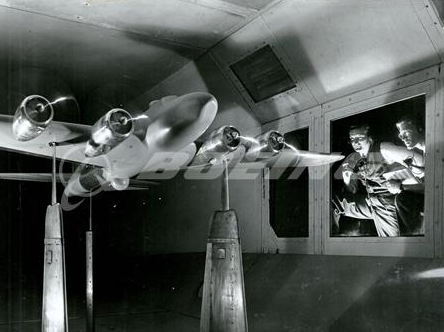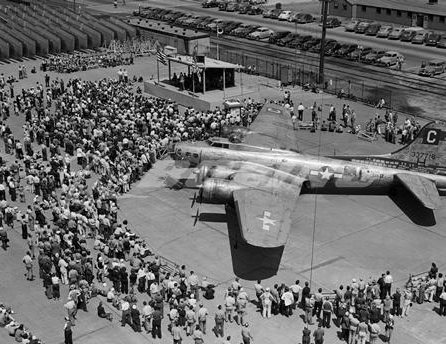Boeing
Plant 2 After
the start of World War II, burlap houses and chicken-wire lawns
camouflaged the
rooftops of Boeing Plant 2 in Seattle
In
response for the Army’s request for a large, multiengine bomber, the
B-17
(Model 299) prototype, financed entirely by Boeing, went from design to
flight
test in less than 12 months. The B-17 Flying Fortress was a low-wing
monoplane
that combined aerodynamic features of the XB-15 giant bomber, and the
Model 247
transport. The B-17 was the first Boeing military aircraft with a
flight deck
instead of an open cockpit and was armed with bombs and five
.30-caliber
machine guns mounted in clear blisters. Each version of the B-17 was
more
heavily armed. Described by General H. H. Hap Arnold, as the backbone
of our
worldwide aerial offensive, the B-17 Flying Fortress served in every
World War
II combat zone. Boeing, Douglas, and Lockheed Vega produced 12,731
B-17s, and
the four-engine bombers became legendary for their ability to stay in
the air
after taking brutal poundings.
In
this March 1944 photo, Boeing engineers Verl Nelson (left) and Bob
Withington
observe
The
5,000th B-17 built after Pearl Harbor carried the signatures of all the
people
who built her. |
Go To MILITARY HISTORY Page



